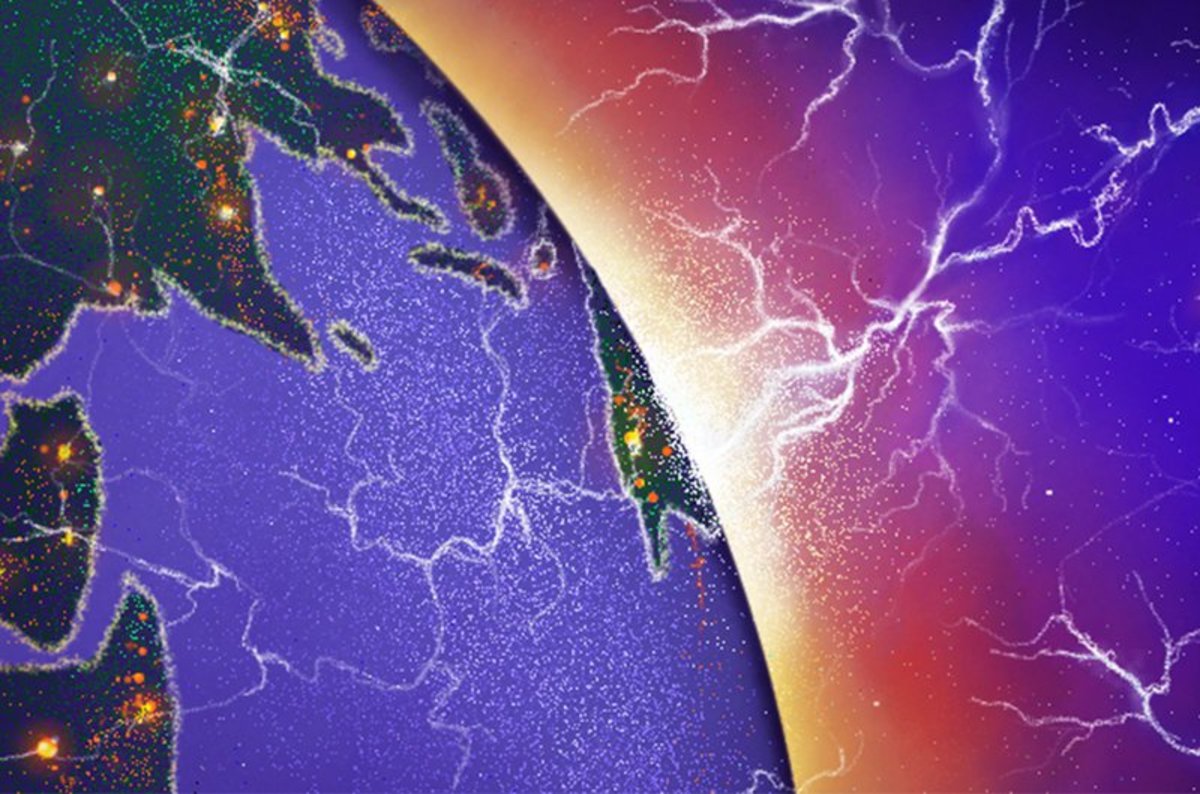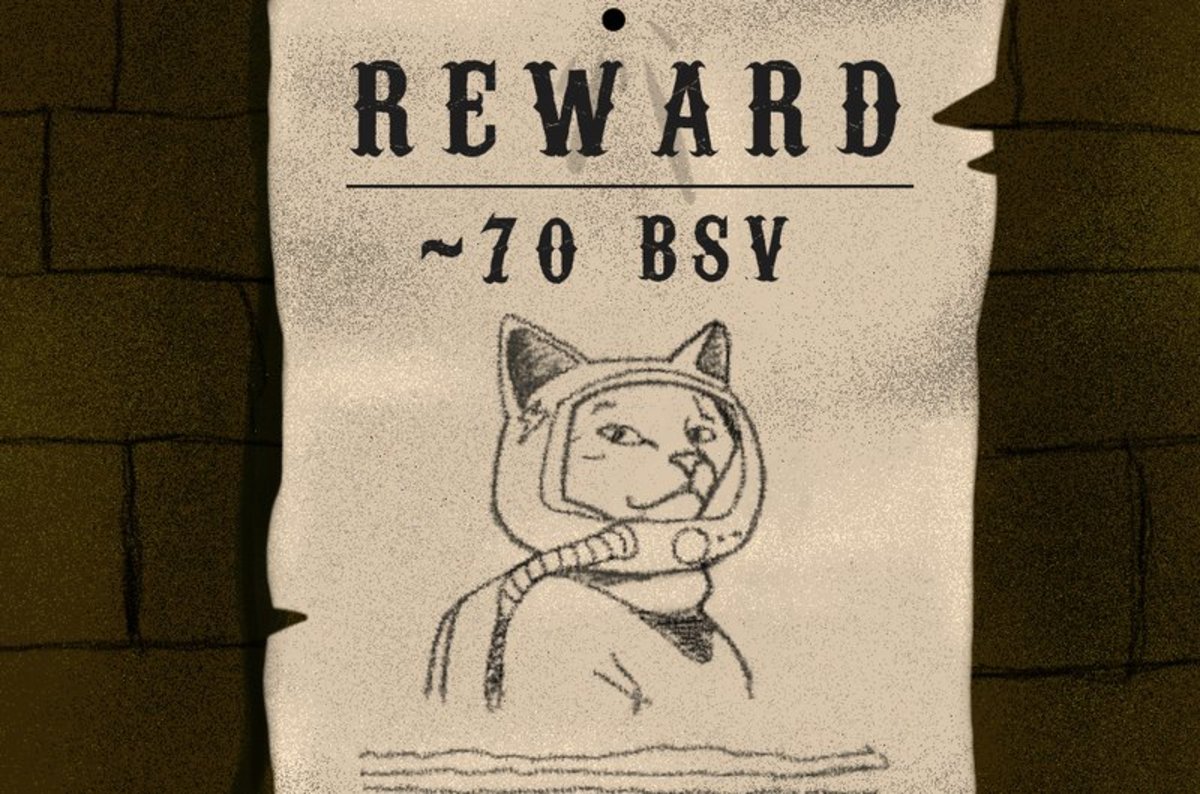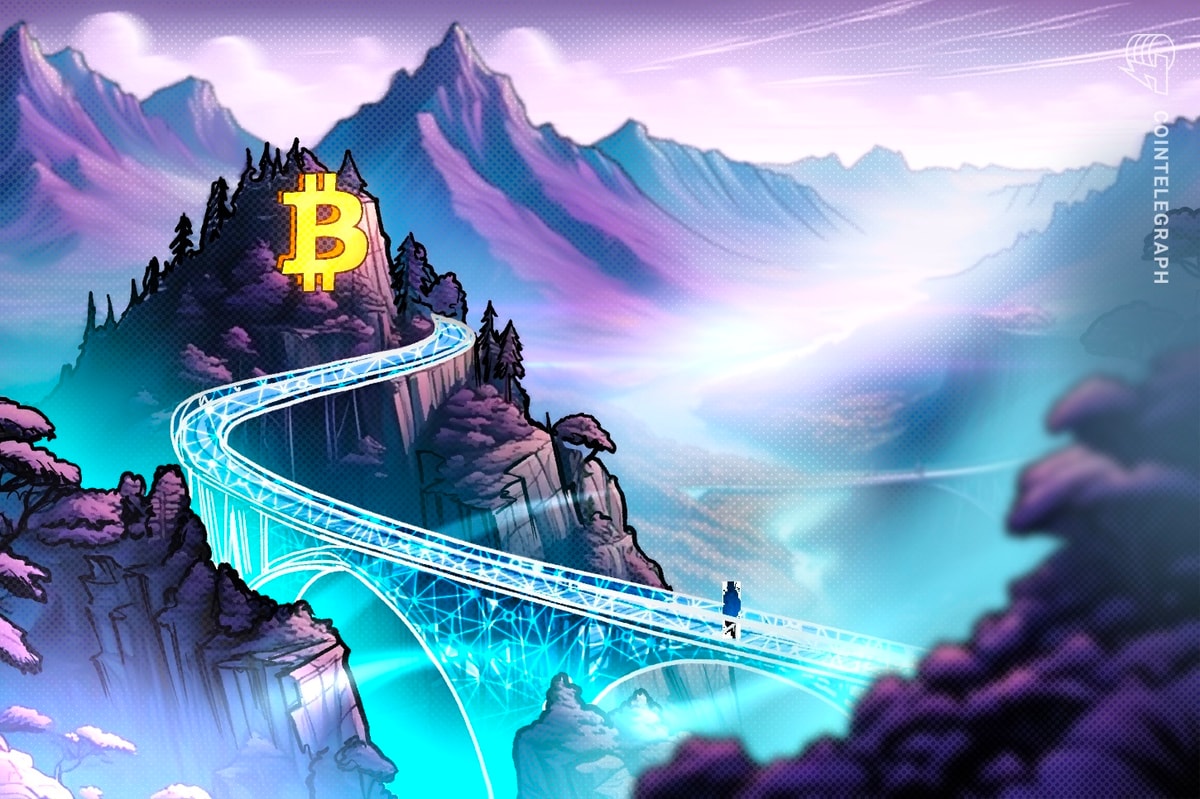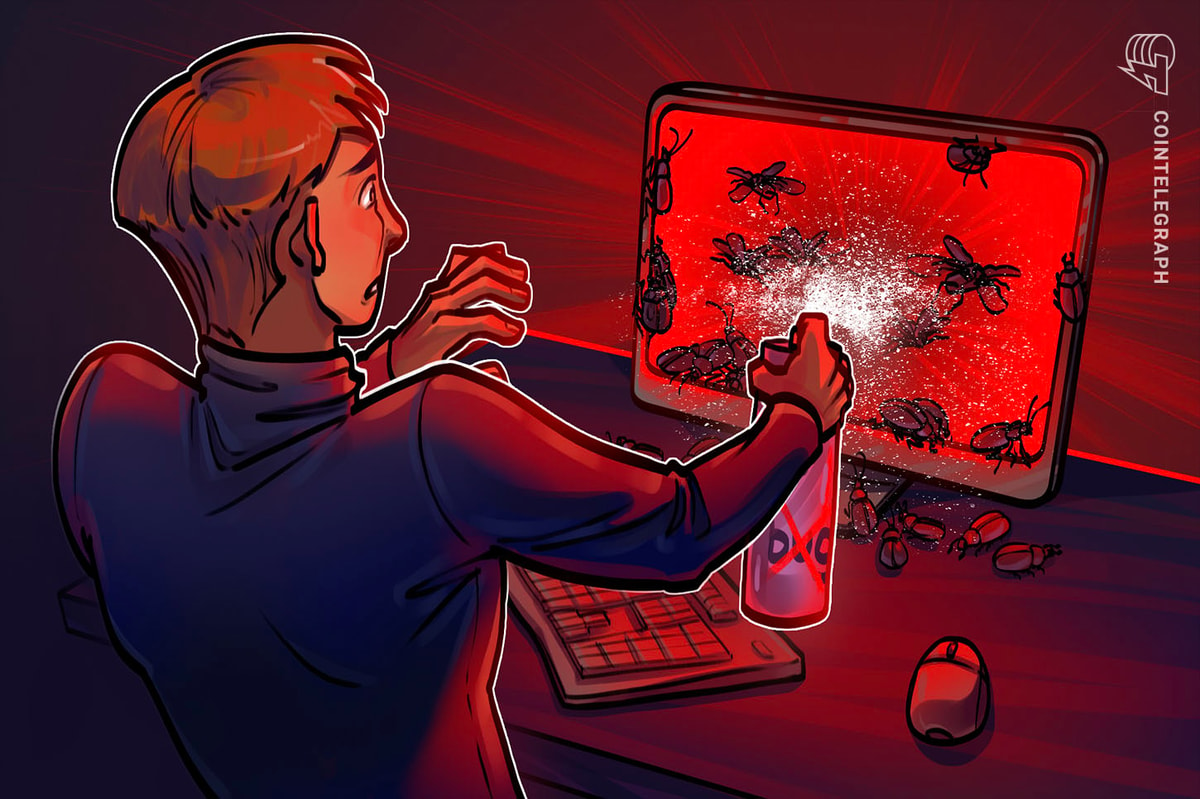The Lightning Torch, a Lightning Network payment that has been forwarded to bitcoiners around the world via Twitter, has run its course and reached its end in the charitable hands of Bitcoin Venezuela.
It’s grown a lot since we last covered it in February. In fact, the term “Torch” doesn’t seem to do it justice anymore. At this point, it could rightly be called a bonfire.
Admittedly, it’d be impossible to pass a bonfire around the world (a Torch sounds much more feasible), but the Lightning Torch doesn’t care much for the impossible or implausible. Ten years ago, the prospect of passing a digital payment to every continent shy of Antarctica would have been unthinkable. Even less thinkable: this payment chain would be passed uninterrupted (well, mostly uninterrupted, save two kinks) over 275 times with hardly anyone’s own opportunism getting the better of it.
It’s intersected with economically sanctioned countries like Iran, fallen into the hands of a Finnish model, been highly publicized after Twitter CEO Jack Dorsey took part and become a gleaming example of bitcoin’s resilience as a currency that has no regard for borders, edicts or politics.
As the Torch enters its final stretch, it has cleared a series of significant hurdles; from escaping greedy hands to transcending economic sanctions, the Torch has more than lived up to the hopes of its Prometheus.
“I never expected it to go anywhere,” Hodlonaut, the Torch’s creator, told Bitcoin Magazine. “It was just a fun little thing that I did; it’s not like I sat and planned this out.”
Igniting the Flame
Like any Twitter trend that goes viral within a niche community, the Lightning Torch began as a bit of “fun.” Hodlonaut, whom I have described as an astronautical tomcat before (and will again and again), wanted to spread excitement for and awareness of the Lightning Network, so he decided to send 100,000 satoshis to the first person in his tweet thread that he trusted.
It came with a catch — or at least an expectation. The recipient would have to add 10,000 sats and then pass it on to someone else, then that person would add more, and so on.
“If somebody asked me on the first day, ‘How far do you think it would go?’ I would have said, ‘10 or 20 hops,’” Hodlnaut recalled. Turns out, he was lowballing it. After 292 passes, it would reach the 4.29 million satoshi limit Hodlonaut set for it.
The seminal passes were mainly lowkey Bitcoin enthusiasts and/or professionals just looking to get in on the fun. They included a couple of duplicate passings, as interest wasn’t fully fledged. Everything ran pretty smoothly during the Torch’s first days and (nearly) everyone played nice. I say “nearly” because, on the 14th pass, the Torch ran into a problem.
sirLordBTC (who, with an EPIC name like that, we’re not surprised tried to screw the system), absconded with the Torch when it was worth under $10. So, all in all, it’s not like he profited much from his sophomoric trick — he likely just wanted to be a contrarian little edgelord.
Hodlonaut actually predicted that, after those first 10 to 20 successful hops, at some point the Torch would be stolen. Technically, his foresight was accurate but, thankfully, the sender, Ruben Johansen, refueled the Torch with 250,000 satoshi and passed it along to someone else. Cracking on, the only other trouble the Torch had would come at 2.51 million satoshis, when pseudonymous user eduard_btc decided to “seize” it because he could.
"So I’m currently proudly holding the Lightning Torch. I’ll seize it because i can, and no one can stop me. This is bitcoin, Lightning Network is unfairly cheap and fast" - Eduard (@eduard_btc)
He received a lot of heat in the ensuing Twitter thread, wherein he justified his decision with the whole “don’t trust, verify” schtick. Still, he eventually buckled under the communal pressure as the general consensus was that he was acting like a jerk, so he sent it back to sender Klaus Lovegreen, who had already pledged to reup the balance and pass it on to a more trustworthy individual.
Building Heat
Barring those two outlying users, the Torch’s movement has been largely uninterrupted. And it eventually made its way to plenty of big name bitcoiners.
An early one of these was Pierre Rochard. A staunch Bitcoin maximalist, Rochard’s popular Lightning node launcher has garnered him a reputation for being one of the space’s premier Lightning Network enthusiasts and educators, so it made sense that he’d hop on so early, and it’s fitting that he’d get to take part.
From here, the flame would pass between the hoi polloi and high profiles alike. Jack Mallers, Brooke Mallers, Nicolas Dorier, D. Dickerson, John Carvalho and the Bitrefill team, Armin Van Bitcoin, Zack Voel, Anthony Pompliano and even Andreas Antonopoulos would all hold the Torch before it hit the 150 passes mark. Halfway to 300 passes, the Torch’s popularity definitely reached a tipping point.
At this juncture, Matt Odell reached out to Twitter Co-Founder and CEO Jack Dorsey, who responded by sending Odell an invoice. Crypto Twitter freaked out, the news made industry (and mainstream) media headlines and the Torch’s prominence blazed forth, putting it in the hands of even more bitcoin (and other cultural) leaders.
From Dorsey, it would go to Lightning Labs Co-Founder Elizabeth Stark. The next 85 passes would be populated by industry heavyweights like Samson Mow, Riccardo Spagni, Alena Satoshi, Whale Panda, Giacomo Zucco, Changpeng Zhao (who took the opportunity to shill BNB), Justin Sun (who took the opportunity to shill TRON), Erik Voorhees, Meltem Demirors, the BitMEX Research team, Ben Davenport, Randy Brito, the CoinGecko team, Boxmining, Mia Tam, Andy Cheung, Charlie Shrem, Vijay Boyapati, Adam Back, Reid Hoffman — and even the team here at Bitcoin Magazine.
Later on in its lifespan, it would also pass through the hands of the team at Slush Pool, Peter Wuille, Jill Carlson, Laura Shin, Peter McCormack, the “Free Ross Ulbricht” campaign and our own Aaron van Wirdum.
With names like these partaking, the Torch’s popularity was hotter than ever. What started as a fun experiment had grown into a cultural movement of sorts with multiple components. This memetic metamorphosis (both the cultural evolution of the Torch and its meme value) has even been chronicled in the artistic renderings of CryptoMemeCentral. In short, the Torch became immensely popular and graduated to full meme status; the tracking of it has become a sort of pastime in the bear market and big names fanned its popularity.
But this popularity also had the unintended consequence of shutting common bitcoiners out. Some on Twitter complained that the surplus of elites vying for the Torch meant that they had become overrepresented in the pool of passers. Tweeting his opinion, Hodlonaut agreed and suggested that it would be wise to keep the process from devolving into exclusivity.
“It looked at some point like it would turn into something that was unavailable to the common guy,” he told Bitcoin Magazine. “I think fortunately we ended up with a good balance overall. There have been periods of only high-profile people, but pretty organically, it ended up in the hands of lower-profile people.”
Circumventing Sanctions, Reaching Disadvantaged Populations
Following a particularly long strand of high-flying passers which ended with Bitcoin Magazine, the Torch not only landed in the hands of under-the-radar bitcoiners, but it would blaze on in some of the areas that need bitcoin the most.
“Bitcoin is a safe-haven,” Ziya Sadr, an Iranian Bitcoin enthusiast and technology writer who took the Torch, told Bitcoin Magazine.
Around the time we took the Torch, a groundswell of community sentiment was pushing for Sadr to accept the Torch on behalf of Iran. The symbolic move would speak volumes to the power of permissionless, censorship-resistant currency, given the international sanctions that have economically annexed the country from the bulk of the world and its government’s repressive stance against technology and financial tools (bitcoin being no exception here).
There was a general fear that, as a financial instrument, bitcoin is prone to the financial sanctions that the U.S. government has levied against Iran. As a U.S.-based company, Bitcoin Magazine’s owner, BTC Inc, didn’t want to take the risk. We even asked the U.S. Treasury on Twitter if sending bitcoin to Iran this way would be permissible (and didn’t get a reply).
So we sent it to Welsh bitcoiner Bitgeiniog instead, who (as promised) passed it on to Sadr in what they called a “cypherpunk, authoritarian-busting move.” For Sadr, who believes that the fretting over sanctions “triggered people to think that bitcoin isn’t what it’s meant to be: a tool to defy censorship which will not conform to governments and sanctions,” the historic moment was incredibly moving and had a significant impact on the Iranian Bitcoin community.
“It was a very bold and public experiment, getting in touch with sanctioned people, people who are exiled from the rest of the world,” he said. “This carried a lot of optimism for the Iran Bitcoin community, and this community represents the rest of people in Iran: the Bitcoin community has people from every category; there are businessmen, investors, entrepreneurs, teachers. It gave us promise; it proved to us that Bitcoin is borderless.”
Hodlonaut said something similar about the Iranian pass in our conversation, namely that the “main takeaway [is that the Torch] connects people directly.”
Sadr said that this gesture of goodwill shows that the Iranian Bitcoin community, which some of us in the West may ignore, “is on equal ground” with the rest of the world.
I’d venture to say they’re even on higher ground. In a country where MasterCard and PayPal are banned (and your bank account can be frozen if you’re caught transacting with either), bitcoin offers a tenable alternative to an unstable economic climate.
It even opens up access to the web at large, said Sadr. He purchased a virtual private network using bitcoin from NordVPN, something he couldn’t dream of doing with the rial, given international sanctions. Telegram, YouTube, Twitter, you name it — all of these are blocked in Iran, but they’re accessible with a VPN.
Sadr, who freelances in exchange for bitcoin to make ends meet, said that bitcoin is increasing in popularity as the rial’s value plummets. People are attracted to earning their wages in foreign currency and bitcoin is more attractive still, given its ability to circumvent the government’s vice grip on personal finances.
“There’s a very active black market — everything is a black market in Iran. Foreign currency markets are black market, so it’s actually the norm,” Sadr said.
LocalBitcoins and Telegram chats are part of this black market and have become common watering holes, and there are two Iran-specific exchanges that people will use to trade, despite the government’s best efforts to block the URLs to these sites.
For the Iranian Bitcoin community and its online hubs, Sadr said that “the number has been growing, even though it’s a bear market — we still see, regardless of all the FUD that’s being spread in the media and the space, the numbers are growing in the communities that I’m active in.”
As part of the Persian New Year custom, Sadr and his bitcoin buddies have been giving people money. But for this year’s holiday, they’re not passing out rials — they’re sending sats through the Lightning Network or through mainnet. He thinks that the token of gratitude will help to educate his countrymen and help ease their access to a financial system that they otherwise might not be able to leverage.
“I meet a lot of people who know that they can use bitcoin to transfer money easily, but they just haven’t tried it yet,” Sadr said.
The Torch’s Legacy
The situation in Iran calls to memory Venezuela’s own political and economic hardship. The Torch has made it there, too — multiple times in fact. The Torch ultimately reached Bitcoin Venezuela, a charity organization which has fed thousands of economically dispossessed citizens thanks to cryptocurrency donations. As its final bearer, Bitcoin Venezuela will blow the Torch out and transmute its altruistic embers into food, necessities and medicine for Venezuelans in need. A number of community members have pledged to match this donation.
The Lightning Torch may have begun as fun, but its intersection with economically and politically destabilized areas is anything but trivial. Its ability to transcend borders, nationalities and ideologies is testament to the fact that Satoshi’s gift to the world (and its grassroots community) is resilient and, by and large, chock-full of goodwill.
“I think that says a lot about this community,” Hodlonaut mused. “People are good in this space. I’ve seen so much positive stuff coming out of this.”
The “random” and “organic” trajectory of the Torch, he continued, “tells volumes about the global nature of bitcoin.” Sure as Satoshi, the proof is in the numbers.
In total, 278 unique participants from 56 countries have sent the Torch to every continent except for Antarctica (though one passer did place their phone on a rock from Antarctica while receiving it, but that really only counts in spirit). Just over 7 BTC has been transacted (roughly 700 million satoshis!) over a period of 83 days.
So inspiring is this experiment-turned-movement that it has spawned offshoots. Obscure altcoin Ravencoin had an on-chain version, and there’s one called the Tiny Torch that has taken off on Bitcoin’s Lightning Network, too. While he had it, Litecoin creator Charlie Lee intimated that he would fork the Torch to Litecoin’s Lightning Network. This didn’t go over too well, though, and Lee eventually removed the tweet with this claim (some saw it as self-promotion and Hodlonaut wanted to make sure there was no confusion between offshoots and the #LNTrustChain hashtag that has demarcated the Torch’s movement).
Hodlonaut doesn’t want the original to fork either, less it get “stale.” He said that a finish line is necessary and that, without it, the Torch loses its significance.
He also told Bitcoin Magazine that keeping track of the Torch’s movement and documenting the phenomenon on its website has been a taxing, “around the clock” job. Given how much impact the Torch has had, we asked him what would be next when this was all over.
“I think I need a vacation,” he chuckled in response.
Well, he’s more than earned one, and thanks to the number of ancillary torches that have proliferated under the light of the original, he can take his rest while the influence of his creativity shines forth in multiple iterations. Much like Satoshi passing the Torch of his creation to a decentralized community of developers and enthusiasts, Hodlonaut’s ingenuity has been passed to a community eager to continue this exercise of trust.
So, the Lightning Torch’s creator can take his vacation; Bitcoin doesn’t take vacations.
To see all of the places the Torch has been, you can track its movements here. If you would like to join others in donating to Bitcoin Venezuela, please visit the charity’s website.











